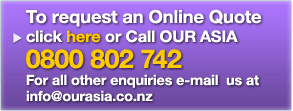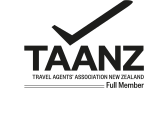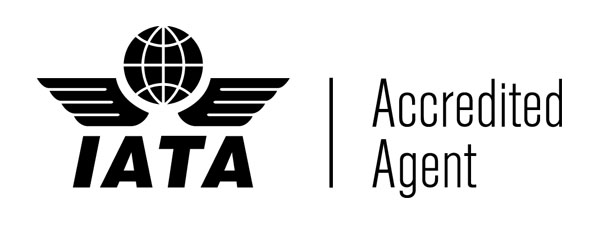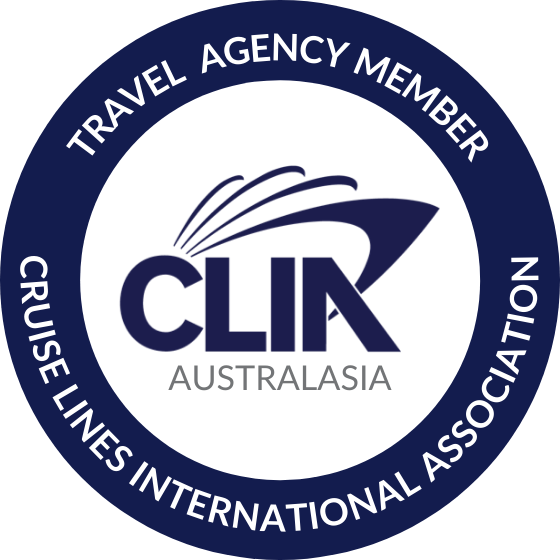OUR thoughts on VIETNAM and CAMBODIA
Until recently Vietnam has been a destination for the more intrepid amongst us. These days, New Zelanders have many options for getting to Vietnam on several airlines, including Air New Zealand who have commenced direct services to Ho Chi Minh City (many locals still refer to this city as Saigon). If you were considering combining a trip to Vietnam with one or more of it’s neighbours; Laos, Thailand and Cambodia, this is much more accessible. Ho Chi Minh City is a great place to start out up the mighty Mekong River to Cambodia’s amazing Siem Reap ancient temple complex.
With so many flight options, more and more Kiwis are beginning to explore this relatively small nation which is jam-packed with interesting, enjoyable sights and experiences and Our Specialists can assist you plan the ideal Vietnam holiday.
Blessed with an incredible coastline and great beaches, Vietnam also offers a fascinating range of sights and experiences including emerald green mountains, breath-taking national parks and historic, energetic and sometimes crazy cities! Recent history unfolds from The Vietnam War (or as the Vietnamese call it, “The American War”) and there are many interesting sites and museums to visit. You will be thrilled with delectable Vietnamese cuisine and the friendly and busy people of this dynamic country. The shopping experience is a major highlight of a visit to Vietnam. Bargains can be found in fine cotton goods, made-to-measure clothing, embroidered goods, art, jewellery, scarves, t-shirts and high-quality shawls. In terms of the best time to visit, Vietnam is a year-round destination.
We like to divide Vietnam into three distinct regional areas for visitors to enjoy. Ho Chi Minh City is in the south of Vietnam, a region which also contains the Mekong Delta, Dalat, Phu Quoc and Nha Trang, to name a few places of interest. Our central Vietnam is mainly the delightful coastal area which is found approximately mid-way between Ho Chi Minh City and Hanoi. The main cities of the central region are Hoi An, Da Nang, Quy Nhon and Hue amongst others. In this region there are a great many excellent beaches as well as an interesting hinterland to explore and enjoy. Hanoi is the centre of northern Vietnam, which includes fabulous Halong Bay, Cuc Phuong, Mai Chau and Ninh Binh as well as the mountainous far north and cities; Sapa, Ha Giang and Bac Ha. Each of these three regional districts is interesting and different – we will try to give you some idea of the differences and attractions of each region.
Getting around Vietnam can be quite daunting. Flights between the major cities are plentiful and inexpensive but alternatives are buses and trains. To give you some idea of the distances involved by land we offer the following approximate guide to distances:
Ho Chi Minh City to Da Nang in our central region is 850kms via a direct inland route, add 100kms for a journey via the coastal cities Nha Trang and Quy Nhon.
Da Nang to Hanoi is approximately 770kms by land.
OUR Southern Region of Vietnam.
Ho Chi Minh City is the largest city in the country, and therefore very busy. Get amongst street vendors, hawkers, pavement cafés and the crowds. Give Ho Chi Minh City at least 3 or 4 days, but you could easily spend a whole week based here. It is easy to get around and many of the city’s sights are within walking distance. However, a first-time visitor would be wise to have some pre-planned activities organised. Reasonably-priced tours are offered be they a walking tour with a local guide, by cyclo, on a scooter-bike or mini bus. We offer the following suggestions:
● A walking tour of the Old Quarter including street markets for street food and the
wonderful restaurants in the Old Quarter.
● A half-day tour to the Cu Chi Tunnels which were built over a period of 25 years
to hide North Vietnamese soldiers during the war. A must-see, there are reputed
to be 200kms of tunnels which contain hospitals, etc.
● A Day Tour to the Mekong Delta – the Rice-Bowl of Vietnam which includes a
visit by boat to interesting points on the Mekong River and the colourful
floating markets. 2 and 3 day tours also available.
● A Cyclo Tour of Ho Chi Minh City’s vibrant streets
● A night tour of the city’s marvellous street-food culture
● A mini bus tour of the city including Reunification Palace, War Remnants Museum,
Notre Dame Cathedral, Jade Emperor Pagoda, the Ben Thanh Market and the
French Colonial Architecture.
● Shopping: New shopping malls are popping up everywhere while there
are many established markets to enjoy. Here are a few markets not to be missed:
- Ben Thanh Market – A huge number of stalls selling a wide range of products
- An Dong Market – known for handicrafts
- Saigon Square – famous for clothing and shoes.
Other southern Vietnam places of interest
● Visit My Tho, a Mekong Delta port city famous for its food.
● Take time out to visit Ben Tre to cruise the Ham Long River.
1, 2 and 3 day tours by bicycle visiting local villages, country lanes,
gardens and rice fields.
● Na Trang. A Coastal City 430 kms from Ho Chi Minh City. Only slightly
less frantic than Ho Chi Minh City and known for beaches and seafood and
a cable car crossing over to Hòn Tre island golf course, water park
and fairground.
Access to Cambodia’s Siem Reap/Angkor Wat Temple Complex
Ho Chi Minh City is one of the departure/arrival points for 7 to 8 day cruises up and down the Mekong River giving access to Cambodia’s Siem Reap and the Angkor Wat temple complex. Siem Reap is accessible by air and land but there is nothing quite like cruising the Mekong River in 3 star to 5 star luxury, Our Specialists can assist you with a range of options to suit your budget and timeframe.
OUR Central Region of Vietnam
Central Vietnam’s beach areas - Hoi An, Da Nang and Quy Nhon as well as Hue, are is in full swing from mid Jan to late August, when it’s hot and dry and temperatures can reach mid 30oC. In winter, expect more rain with October and November reaching peak wet-season rain levels. The central region is home for many historic sites, beautiful mountains, valleys and forests and those world-renowned beaches.
Historic Hoi An is a delightful river-side city with a laid-back, easy-going way of life which reflects in its major tourism appeal. Enjoy the Old Town, historic Japanese merchant houses, ancient tea warehouses and Chinese temples alongside boutique shops and hotels. At the market and over on Cam Nam Island you can still find vestiges of an older way of life. Just outside Hoi An there is interesting country to enjoy by bicycle, scooter-bike and boat. Hoi An is well known as a culinary mecca and a fun activity here is to take in a cooking class so you can take home new found skills. We recommend at least 2 or 3 days in Hoi An.
From Hoi An it is only 40 minutes by road to Da Nang, another coastal city which has a French colonial history and is well known for its beautiful beaches. Da Nang is a jumping-off place for visiting the popular Ba Na Hills. Enjoy panoramic views from Hai Van Pass of Da Nang Bay and the South China Sea. The Marble Mountains are interesting for the caves containing Buddhist shrines. Enjoy surfing at Nun Nuoc Beach which is only one of the many great beaches near Da Nang. Other points of interest include Monkey Mountain, Dragon Bridge across the Han River (longest bridge in Vietnam), Phap Lam Pagoda, Cham Museum (Vietnam’s indigenous tribe dating back to 192AD) and the iconic Da Nang Cathedral. The Fifth Military Division Museum of Da Nang is another interesting place to visit and reflect on Vietnam’s past.
Huế where the streets are relatively traffic free, is a former royal capital and seat of Nguyen Dynasty emperors and the national capital from 1802-1945. Located on the Perfume River only 100kms from Da Nang, Hue is a major attraction is its vast, 19th-century Citadel, surrounded by a moat and thick stone walls. It encompasses the Imperial City, with palaces and shrines; the Forbidden Purple City, once the emperor’s home; and a replica of the Royal Theatre. Famous for historic buildings and magnificent museums. This is a good place to stop and relax for a couple of days when travelling between northern and southern Vietnam.
OUR Northern Region of Vietnam
770kms from Na Trang to Hanoi, northern Vietnam (Hanoi, Halong Bay, Cuc Phuong, Mai Chau and Ninh Binh) has a distinct winter and summer season. Winter is cool but dry, and runs November to April with temperatures average 17°C to 22°C. In summer, from May to October, expect hot and humid weather with high rainfall. The wettest months are July to September.
The mountainous Far North (Sapa, Ha Giang, Bac Ha) enjoys a dry season from October to late March, with a wet season lasting from April to September. December and January are quite cold, especially at night.
Hanoi offers up a blend of Parisian grace and bustling Asian pace. Sweeping boulevards, peaceful lakes and ancient pagodas combine to make Hanoi an energetic city to visit. The Old Quarter is steeped in history, with motorbikes zipping around in what seems like organised chaos, with streets busy with hawkers selling their wares, with locals (and tourists) enjoying bia hoi (local beer, which is very cheap). We recommend at least a 2 day stay to get the best out of Hanoi. This remarkable city commonly fits into a Vietnam itinerary as either the start or end of your Vietnam exploration as well as being the gateway to wonderful Halong Bay.
No trip to Vietnam would be complete without visiting iconic World Heritage listed Halong Bay. Currently a 4 hour coach ride from Hanoi (although a new highway currently being built will reduce this journey to 2 hours) it is worth the drive to cruise for 1 or 2 nights (we always recommend 2 nights) in this most beautiful location. Board a traditional junk-style vessel or an upmarket small ship, and sail through beautiful islands to visit limestone caves, go kayaking, swimming, squid fishing or simply sitting back and enjoying the views.
OUR Cambodia
As a nation, to say Cambodia has seen its fair share of strife in the recent past is putting it mildly, but what shines through to every visitor is a people who are friendly and resilient. Cambodians seem determined to get on with life and make the very best of things and many a tourist comes back full of admiration for all that is being achieved.
To tie in a visit to Vietnam with Cambodia is almost a given. This is a country that is steeped in history. From a sobering visit to the Killing Fields to the magnificent temples of Angkor Wat near Siem Reap, you are sure to be in awe of what diverse country offers.
Whether your travel to Vietnam is on a simple 7 day holiday, on a cruise, or exploring Vietnam’s different regions on an extended journey, you can travel independently, or be as guided as you wish. Our Specialists will help tailor-make you a perfect Vietnam holiday experience.
OUR HELPFUL TIPS
HEALTH
All travellers should have up to date “ background” vaccinations. While there is currently no specific vaccination required, please check with Our Specialists. Vietnam while not having any particular health risk, general hygiene does vary from New Zealand, and sensible precautions should prevail, such as do not drink tap water, drink only bottled water, avoid eating food exposed to natural elements, and cover arms and legs in the evenings to avoid mosquito bites.
CLOTHING
Casual and light clothes are recommended unless you are planning on visiting the North or mountainous regions where it will be cooler. For exploration, definitely pack your favourite walking shoes!
ELECTRICITY
220 volts and round 2 pin plugs are used.
Adaptors are readily available for sale in Vietnam, for the equivalent of around $1 NZD. However, ensure to check the quality before you buy.
TAXIS
Taxis are a convenient and cheap way to get around in Vietnam, however there are some things to be wary of.
Some drivers will take you on a longer route in order to increase your fare. It always pays to have a good idea of where you are going before you hop in a taxi, by either checking a map or using the GPS on your mobile phone.
Ask your hotel reception or tour guide to call you a taxi, or provide the phone number of a good taxi company to carry with you.
Many taxi drivers have limited English, although most will know the names of hotels and any tourist attractions. Ensure your driver knows exactly where you are wanting to go before you get in.
If you get an honest and reliable driver be sure to ask for their business card so you can use them again (and give them a nice tip!).
Currency:
The local currency is called the Vietnamese Dong. Currency comes in bank notes in denomination of 500, 2000, 5000, 10,000, 20,000, 50,000, 100,000, 200,000 and 500,000 dong. 10,000 dong equates roughly to NZ .70 cents.US Dollars (USD)
You can use US Dollars as well in most of your transactions, however you will usually have to ask for the US Dollar price. Paying in US Dollars will typically be more expensive, particularly on smaller purchases, due to the exchange rate that vendors use.
Local Time:
5 hours behind Greenwich Mean Time (GMT).
Weather:
The weather varies considerably from the North to the South of Vietnam and during most months you will experience both glorious sunshine, and rain in varying quantities.
Southern Vietnam has the most constant weather year-round, with only two seasons to contend with – the dry season between November and early May and the wet season from May to November. In the wet season rainfall is short, but heavy. Average daily year-round temperatures range between 25°C and 35°C.
Northern Vietnam (Hanoi, Halong Bay, Cuc Phuong, Mai Chau and Ninh Binh) has a distinct winter and summer season. Winter is cool but dry, and runs November to April with temperatures average 17°C to 22°C. In summer, from May to October, expect hot and humid weather with high rainfall. The wettest months are July to September.
Weather in Cambodia is pretty simple – its either the dry season (October to late April), or wet (May to late September), and while the coolest months tend to be October through December, they are still in the 24°C to 26°C range. For the rest of the year expect rather hot temperatures with May and June at times exceeding 35°C.
Entry requirements:
New Zealand passport holders need a Visa to enter Vietnam. Your passport will need to be valid for a minimum of 6 months from your expected departure date from Vietnam, and Visas can either be pre-arranged in New Zealand, or more simply upon arrival in Vietnam, for which we can supply you the necessary Visa Approval Letter to take with you (cost applies). Talk to Our Specialists for further information.














